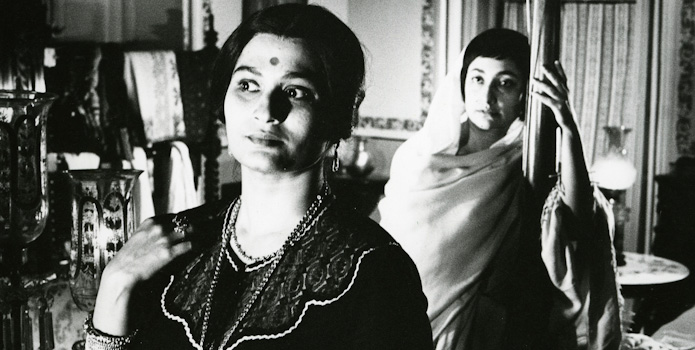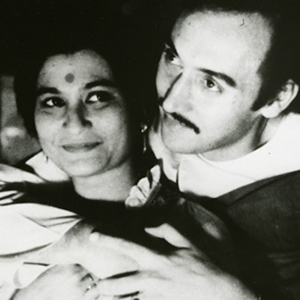Ghare-Bair
Cast: Soumitra Chatterjee, Victor Banerjee, Swatilekha Chatterjee
Director: Satyajit Ray
Country: India
Genre: Drama
Official Site: Here
Editor’s Notes: The following review is part of our coverage for TIFF’s The Sun and the Moon: The Films of Satyajit Ray. For more information on upcoming TIFF film series visit http://tiff.net and follow TIFF on Twitter at @TIFF_NET.
Social change often requires charismatic mouthpieces to be the lynchpin for their cause. These arbiters of ideology peddle their wares with showmanship aimed at inciting the masses into adjusting their perception to conform to the parameters of the newly promised theoretical utopia. They must live and breathe the precepts of their carefully packaged, wholesale-ready ethos lest the masses see through the strategically placed scrim that obfuscates the unintended side-effects that the marketable ideology brings with it. The most attentive and perceptive among us are aware of the ruse and can see the dire cost that lurks behind every empty slogan, but sometimes even the most brilliant minds can be temporarily coerced by shallow wit and hollow charisma. Satyajit Ray’s Ghare-Baire establishes a love triangle with an intelligent and dynamic woman (Bimala) who is married to a trader (Nikhil) as the trader’s college friend (Sandip) blows into town and delivers frenzied speeches selling the bitter wares of national isolationism and resurrected conservatism, policies that would destroy the husband’s wealth and relationship with his tenants while suppressing the intelligence and charisma of Bimala.
The most attentive and perceptive among us are aware of the ruse and can see the dire cost that lurks behind every empty slogan, but sometimes even the most brilliant minds can be temporarily coerced by shallow wit and hollow charisma.
Despite views that are in diametric opposition to the nature of his gracious hosts, Sandip carries himself with a casual seductive charisma that Bimala tries to resist but ultimately succumbs to despite having deeply rooted suspicions about their guest’s dubious motivations. He delivers speeches targeted at the evils of British colonialism, acting as a voice for the Swadeshi movement that would close India’s borders to foreign trade while consequently deepening the rift between Hindu and Muslim citizens. Sandip is an irreconcilable force of nature as he sweeps into the lives of the progressive couple, smiling with false earnestness as he explains why he must travel first class and smoke foreign cigarettes, actions that are in direct opposition to his principles. Bimala is intrigued by these inconsistencies in Sandip’s character and challenges him for his hypocritical behavior, but his charismatic nature allows him to evade these concerns and seduce Bimala into trying on an ideology that is not in her own best interest.
Ray nods to his cinematic peers of a bygone era in this softly lit chamber drama as whispers of Bergman manifest through soft lighting and pared down structure as the opulence of Ophuls fill the couple’s mansion with ornate treasures and soul-revealing mirrors.
Ray nods to his cinematic peers of a bygone era in this softly lit chamber drama as whispers of Bergman manifest through soft lighting and pared down structure as the opulence of Ophuls fill the couple’s mansion with ornate treasures and soul-revealing mirrors. The hand of an unfaithful lover caresses the back of her paramour in a quick nod to Godard’s Une Femme Mariee. The Indian proletariat watch Sandip’s impassioned speeches like lost workers from a Sergei Eisenstein film while giant Hindi letters stand out against a blood red banner like a spontaneous Soviet flag. By using these flourishes, Ray cleverly contextualizes Indian politics in the modern world using a novel from 1916 as his narrative fountainhead and the techniques of cinematic masters through the history of the medium as familiar reference points to guide the viewer with wordless exposition.
Ghare-Baire is a superbly crafted chamber piece that only an experienced artist could successfully execute with its pared down narrative structure that deftly illuminates the political tumult in a period of Indian history, the bankruptcy of charismatic figureheads and crafty mouthpieces of dubious social movements, and humanity’s naiveté that allows us to be coerced into ideas against our own best interests and better judgment.
Ghare-Baire is a superbly crafted chamber piece that only an experienced artist could successfully execute with its pared down narrative structure that deftly illuminates the political tumult in a period of Indian history.





